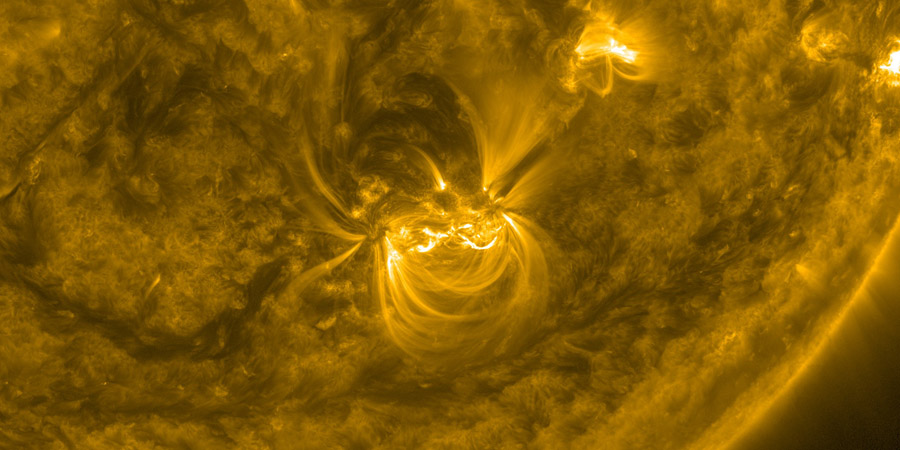Sunspot region 2422, M-class solar flares
Sunday, 27 September 2015 23:48 UTC

Sunspot region 2422 has been slowly growing the past few days and quickly gained a Beta-Gamma-Delta magnetic layout during the past few days. This resulted in two M-class solar flares today: M1.0 and M1.9. None of these events were eruptive and no coronal mass ejections were launched. Can we expect more strong solar flares?
Looking at sunspot region 2422 right now we see that there are two delta structures (indicated by arrows on the image at the end of this article) but these delta sunspots do seem to be drifting towards the east and away from the leading sunspot cluster into the intermediate area. This means the delta structures are becoming less compact which would decrease the chance for strong solar flares. There is however a catch: there is an above average amount of movement within this group as well as some growth making it hard to analyse this region right now as it can look very different in a few hours time.
However, purely by what we are seeing right now with the two delta sunspots and all the other spots moving around so much we can expect unstable magnetic fields within this group which means solar flares remain likely. M-class activity in the next 24 hours is likely (R1-R2) with a very slight chance for an X-class (R3 or greater) event. Should this sunspot region erupt in the next 24 hours, there is a good chance that the resulting plasma cloud (coronal mass ejection) has an earth-directed component.
M-class flare probability for the coming 24 hours: 60% chance
X-class flare probability for the coming 24 hours: 10% chance
Image: Sunspot region 2422 as seen by NASA SDO.
Thank you for reading this article! Did you have any trouble with the technical terms used in this article? Our help section is the place to be where you can find in-depth articles, a FAQ and a list with common abbreviations. Still puzzled? Just post on our forum where we will help you the best we can!
Latest news
Latest forum messages
More topicsSupport SpaceWeatherLive.com!
A lot of people come to SpaceWeatherLive to follow the Sun's activity or if there is aurora to be seen, but with more traffic comes higher server costs. Consider a donation if you enjoy SpaceWeatherLive so we can keep the website online!

Space weather facts
| Last X-flare | 2024/12/08 | X2.2 |
| Last M-flare | 2024/12/26 | M3.0 |
| Last geomagnetic storm | 2024/12/17 | Kp5+ (G1) |
| Spotless days | |
|---|---|
| Last spotless day | 2022/06/08 |
| Monthly mean Sunspot Number | |
|---|---|
| November 2024 | 152.5 -13.9 |
| December 2024 | 115.2 -37.3 |
| Last 30 days | 118.5 -39.1 |



